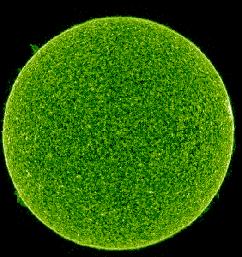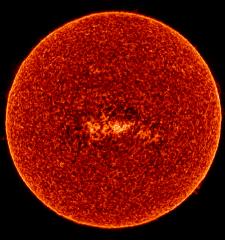 |
Click on image for larger version. |
|
The transition region is a thin and very irregular layer of the Sun's
atmosphere that separates the hot corona from the much cooler chromosphere. Heat flows down from the corona into the chromosphere
and in the process produces this thin region where the temperature changes rapidly from
1,000,000°C (1,800,000°F) down to about 20,000°C (40,000°F). Hydrogen is ionized
(stripped of its electron) at these temperatures and is therefore difficult to see.
Instead of hydrogen, the light emitted by the transition region is dominated by such ions
as C IV, O IV, and Si IV (carbon, oxygen, and silicon each with three electrons stripped
off). These ions emit light in the ultraviolet region of the solar spectrum that is only
accessible from space.
|
|
The transition region has been studied from space using instruments on
several spacecraft including the Solar Maximum Mission and the Solar and Heliospheric Observatory. The Transition Region and Coronal Explorer
(TRACE) mission is now actively acquiring data on the structure and dynamics of the
transition region. The images to the left are from the SUMER instrument on the SOHO
Mission. The top image is emission from Carbon IV at temperatures of about 100,000°C. The
bottom image is emission from Sulfur VI at temperatures of about 200,000°C.
|
 |
Click on image for larger version. |
|



